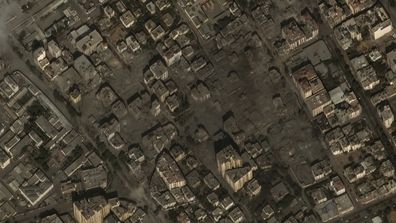Development on the Iron Dome first began in 2007. After tests in 2008 and 2009, the first Iron Dome batteries were deployed in 2011. The system has been upgraded several times since.
The Iron Dome is designed to shoot down incoming projectiles. It is equipped with a radar that detects rockets and then uses a command-and-control system that quickly calculates whether an incoming projectile poses a threat or is likely to hit an unpopulated area. If the rocket does pose a threat, the Iron Dome fires missiles from the ground to destroy in the air.
To those on the ground, a direct interception sounds like a loud bang and can sometimes be felt from the ground.


Satellite photos show devastated Gaza after Israeli airstrikes
Read Related Also: Who Is Cher's Boyfriend, Alexander Edwards?
The warhead is believed to carry 11 kilograms of high explosives, IHS Jane’s said. Its range is from 4 km to 70 km.
It is important to note that unlike the air defence systems designed to stop ballistic missiles, the Iron Dome targets unguided rockets that remain at low altitudes – the type often fired by militant groups in Gaza.
During times of war, the cost to operate Iron Dome can rise quickly. Each missile costs around $40,000, so intercepting thousands of incoming rockets adds up.
The US government has spent over $1.5 billion on the Iron Dome program, and research related to it as well.






